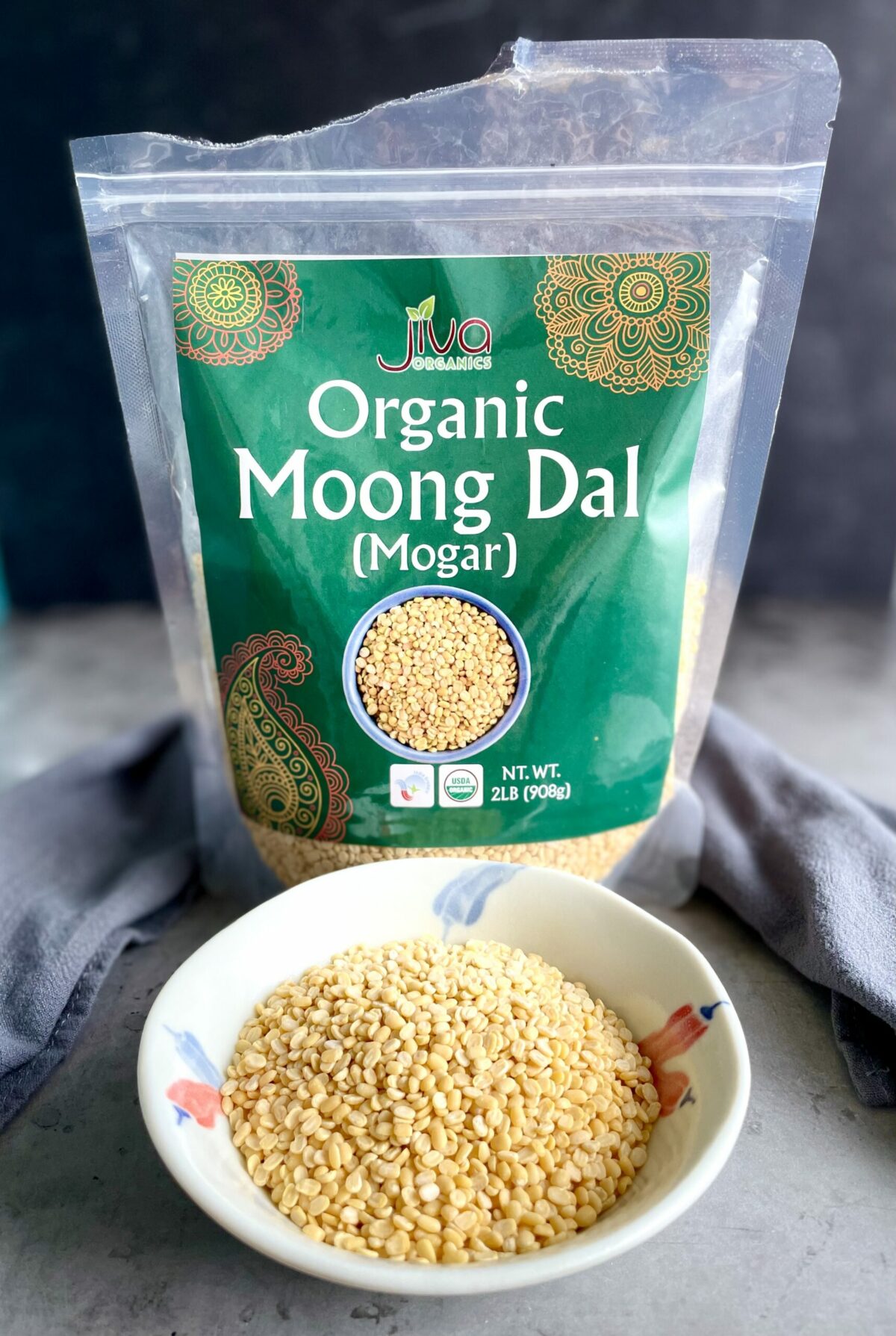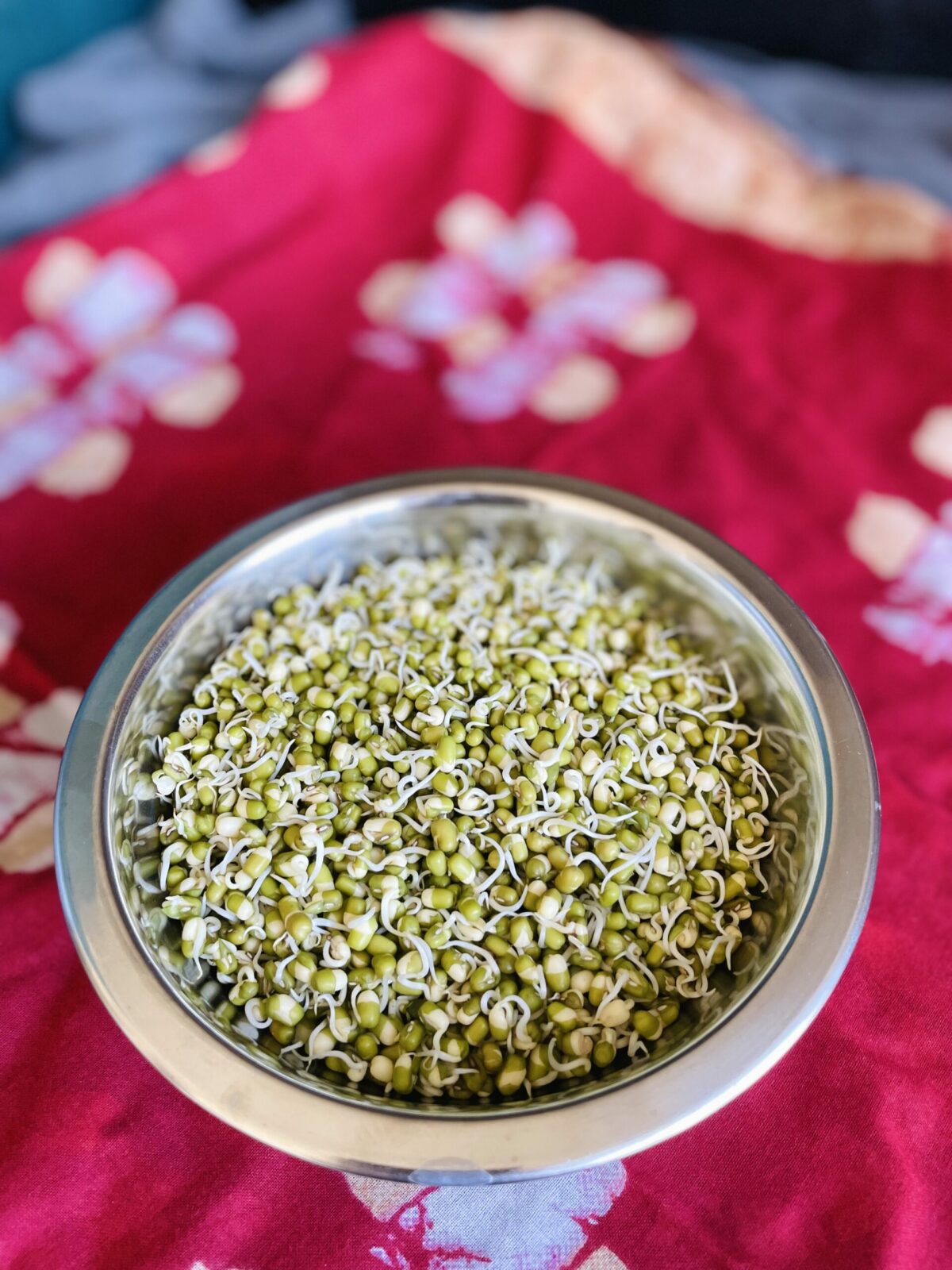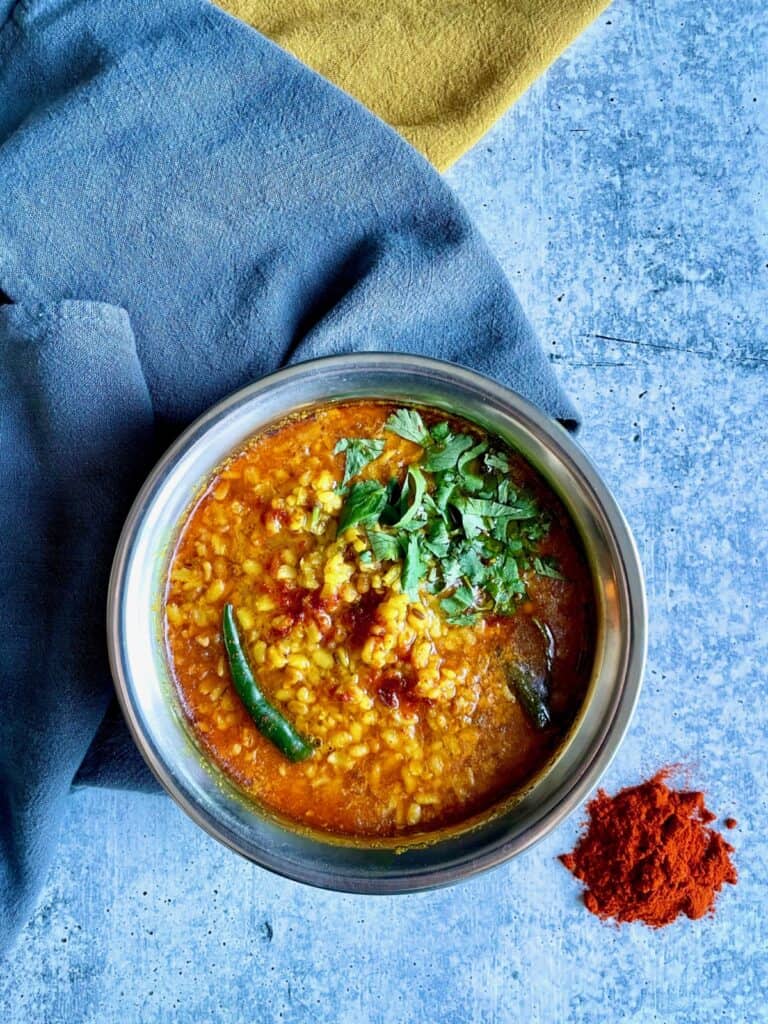Let's turn the direction into the vast world of legumes! There exists a tiny, yet mighty, protagonist known for its remarkable health benefits and a few sidekicks of side effects. Yes, we're talking about moong dal, a staple food that has graced the plates and bowls of many in Asian countries, especially in India and Southeast Asia.
Moong beans, also known as green gram, or simply green beans, have been a part of the human diet since ancient times, and for good reason. Let's dive into the world of moong dal, exploring its benefits and side effects, and why it should be a part of your daily diet.

Jump to:
What is moong dal?
Moong dal is a type of legume that comes from the vigna radiata plant, which is native to India and Southeast Asia. It is also known as mung bean or green gram in other parts of the world. Mung beans are small, oval-shaped green lentils that have been cultivated for over 4,000 years and are a major part of traditional cuisines in many Asian countries.
Moong dal is commonly consumed in its split and husked form, also known as dal or dhal. It is a staple ingredient in many dishes such as curries, soups, stews, and even desserts. Moong dal is not only delicious but also highly nutritious, making it a popular choice for vegetarians and vegans.
You can use moong dal in various ways, including sprouting, boiling, or grinding into flour. Sprouted moong beans are a popular snack and are packed with nutrients such as protein, fiber, and vitamins.
Boiled moong beans can be added to salads or used as a filling for wraps and sandwiches. Ground moong flour is often used in traditional Indian sweets like ladoos and halwa.
In addition to being versatile and tasty, moong dal also offers numerous health benefits. It is a rich source of plant-based protein, making it an excellent alternative to meat for those following a vegetarian diet.
What's the difference between moong dal and mung beans? Are they the same?
You might be asking yourself, what's the difference between yellow moong dal vs mung beans, the answer is super simple, they are essentially the same lentil except that moong dal is the de-husked and split version of mung beans.
Read more about it in my related moong dal vs mung beans article.

Moong dal benefits and side effects
When you're consuming moong dal, you're also consuming tons of healthy nutrients! Moong dal boasts a high protein content, essential amino acids, dietary fiber, and a variety of vitamins and minerals including vitamin B, vitamin C, folic acid, iron, and more.
These nutrients contribute to its role in weight loss, heart health, and improving blood circulation. The presence of phenolic acids such as cinnamic acid and caffeic acid, along with other bioactive compounds, provides anti-inflammatory and antioxidant benefits, fighting off free radicals and reducing oxidative stress.
Moong dal health benefits
Consider incorporating these yellow petite lentils into your diet on a daily or weekly basis as they have a cornucopia of health benefits. The main ones are listed below.
Heart health and cholesterol levels
Moong dal's fiber, particularly its dietary fiber, plays a crucial role in managing cholesterol levels by reducing bad LDL cholesterol. Its nutrients also contribute to lowering blood pressure, making it beneficial for those with high blood pressure and reducing the risk of heart disease.
Weight loss and digestive health
The high dietary fiber and resistant starch in moong dal promote a feeling of fullness, reducing overall calorie intake, which is essential for weight loss. The fiber also supports the digestive tract, fostering healthy gut bacteria, and ensuring smooth digestion, according to the National Library of Medicine.
Blood sugar and blood pressure control
Thanks to its low glycemic index, moong dal helps in managing blood glucose levels, beneficial for diabetics, pre-diabetics, and those aiming to maintain stable blood sugar levels. Its potassium content aids in lowering blood pressure, offering a double boon for managing chronic diseases.
Pregnancy and Nutritional Support
The folic acid content in moong dal is particularly beneficial for pregnant women, supporting fetal development and reducing the risk of neural tube defects.

Nutrient-rich plant-based protein
A few other benefits to mention is that moong dal is a good source of plant-based protein, making it a great option for vegetarians and vegans. It is also rich in vitamins and minerals such as iron, magnesium, and vitamin B6, which are essential for overall health and well-being. The vitamins are also important for maintaining a healthy immune system, helping to fight off infections and illnesses.
Low in calorie count and fat
Additionally, moong dal is a low-calorie and low-fat food, making it a great choice for those looking to manage their weight. And because it is also high in dietary fiber, it helps promote healthy digestion, which aids in weight loss efforts. The fiber content helps regulate blood sugar levels and prevent spikes after meals.
Healthy skin
For those trying to maintain healthy skin, moong dal offers benefits as well. Its antioxidant properties can help reduce skin damage from free radicals and promote collagen production, keeping the skin looking youthful and radiant.
Dal is naturally gluten-free
For those sensitive to gluten or recently diagnosed with celiac disease, you might be delighted to learn that all dals are gluten-free. Learn more about it in this Is Dal Gluten-Free article and learn how to make sure it's 100% gluten-free if you are highly allergic to it.

Moong dal side effects
While moong dal is generally safe and beneficial for most, there are a few side effects worth noting.
Digestive issues for extra-sensitive tummies
For individuals with certain medical conditions like Crohn's disease and irritable bowel syndrome (IBS), or those that underwent a prolonged use of antibiotic that resulted in damage to the digestive system or the vagus nerve, you could be particularly vulnerable to all legumes whether they're easy on the digestive system like moong dal and red lentils or harder-to-digest ones like lima beans.
Bloating and gas
For those with chronic inflammation or ulcers in the digestive track or immune-compromised individuals, all legumes including moong dal can cause digestive issues like bloating or gas that lead to pain due to its high fiber and phytic acid content. In this case, it's best to consult your doctor or registered dietitian or avoid legumes altogether.
Even stress can cause some stomach upset sometimes. So, it's always important to consume anything you're sensitive to in moderation, as excessive consumption can lead to high body temperatures and digestive discomfort.
Minor risk of bacterial contamination
Sprouted mung beans or raw mung bean sprouts, while nutritious, can carry a risk of bacterial contamination if not properly sprouted, handled or cooked. Pregnant women, young children, the elderly, and individuals with compromised immune systems should exercise caution with raw mung bean sprouts or sprouted mung beans.

Picture: Sprouted mung beans.
Best ways to enjoy moong dal
Moong dal can be savored in numerous forms - as green moong dal, yellow moong dal, moong dal sprouts, in soups and like I said earlier, even desserts, yum!
Each variant offers a unique taste and nutritional profile, making moong dal versatile in culinary applications. Whether incorporated into a savory dal, sprouted for a crunchy salad, or transformed into a comforting soup, moong dal adapts to your palate while packing a nutritional punch.
You can also experiment with different spice combinations to elevate the flavor of your moong dal dishes. From cumin, coriander, and turmeric to mustard seeds, curry leaves, and ginger - the possibilities are endless. And for those with a sweet tooth, try incorporating moong dal into desserts like halwa or kheer for a healthy twist.
May I propose my Typical Bengali Moong Dal recipe? It's very simple to prepare and is a wonderful way to showcase the versatile yellow moong dal.
Cook moong dal
Although it's not necessary to soak these petite yellow lentils because they cook quickly and are easy to digest, I do prefer to do so even if it's just for a short period of time. Soak dried moong dal for 20 - 30 minutes prior to using.
Soaked lentils are easier on the digestion and shortens the cooking time. Then, rinse them thoroughly before adding them to a pot of boiling water. Let it cook until soft but not mushy, about 20-25 minutes. You can also use a pressure cooker for even faster results.
Final thoughts: What are moong dal benefits and side effects?
Moong dal, with its myriad of health benefits ranging from heart health to weight management, and its minimal side effects, is a superhero in the world of legumes.
Incorporating moong dal into your diet can be one of the best ways to embrace the ancient wisdom of consuming legumes for a balanced and nutritious diet. The next time you're pondering over your meal choices, remember the mighty moong dal and all the goodness it has to offer!
Related posts
Now that you know all about the benefits and side effects of consuming these nutrient-packed lentils, how about learning what makes them different from green mung beans in my moong dal vs mung beans article?
And don't forget to check out my delicious Bengali Moong Dal recipe.


Leave me a comment!
If you found this article helpful, please consider sharing it. If you have any questions or comment, please leave me a note in the comments section below. I would also love to hear from you. Happy cooking!


Leave a Reply